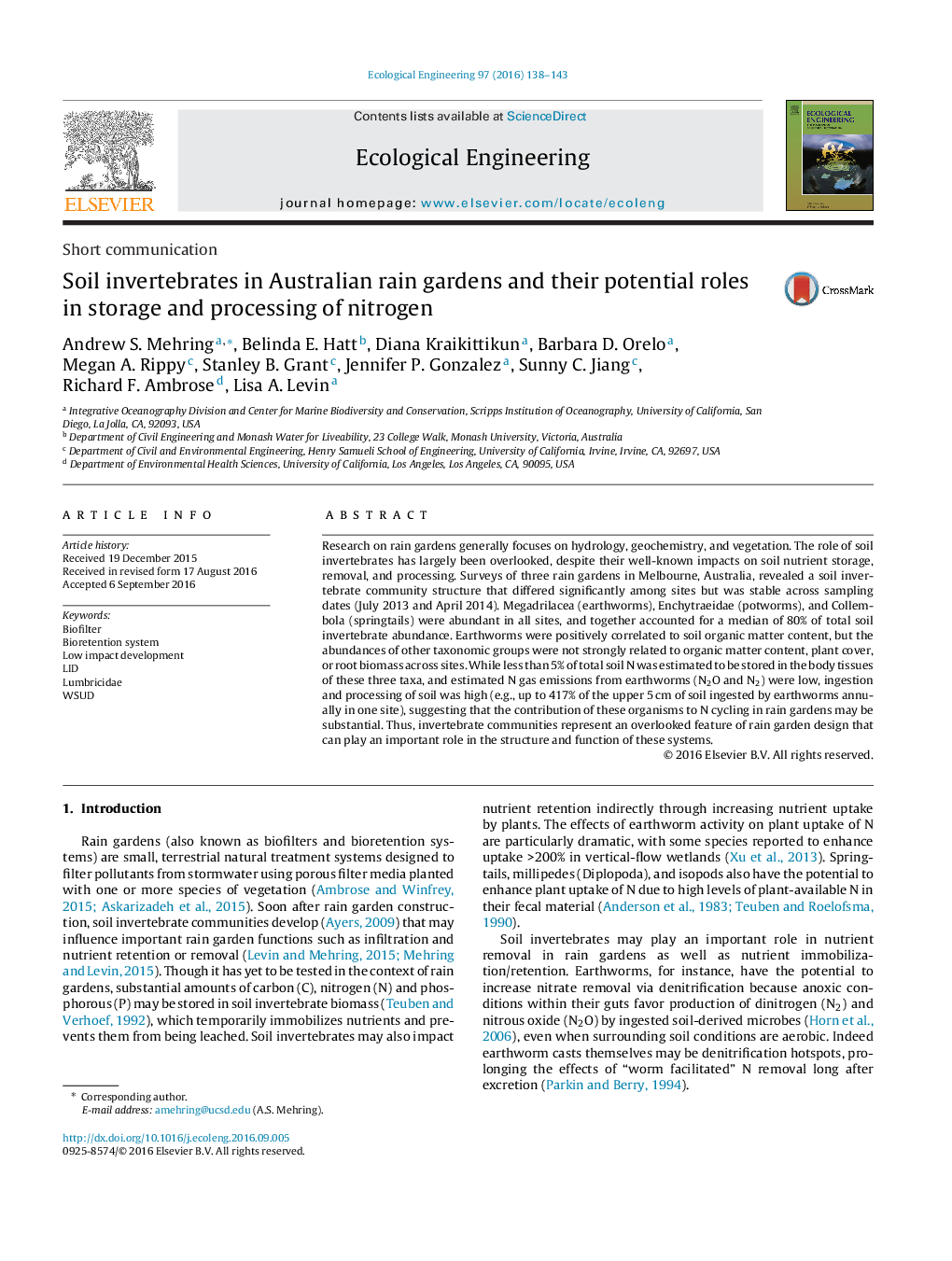| کد مقاله | کد نشریه | سال انتشار | مقاله انگلیسی | نسخه تمام متن |
|---|---|---|---|---|
| 4388374 | 1618002 | 2016 | 6 صفحه PDF | دانلود رایگان |
• Rain garden soil invertebrate communities differed spatially but not temporally.
• Oligochaetes and springtails accounted for 80% of total soil invertebrate abundance.
• Earthworm abundance was positively correlated to soil organic matter content.
• Estimated soil invertebrate N storage and gas emissions were low but estimated ingestion rates were high.
• Intersite differences in invertebrate functional effects may be temporally stable.
Research on rain gardens generally focuses on hydrology, geochemistry, and vegetation. The role of soil invertebrates has largely been overlooked, despite their well-known impacts on soil nutrient storage, removal, and processing. Surveys of three rain gardens in Melbourne, Australia, revealed a soil invertebrate community structure that differed significantly among sites but was stable across sampling dates (July 2013 and April 2014). Megadrilacea (earthworms), Enchytraeidae (potworms), and Collembola (springtails) were abundant in all sites, and together accounted for a median of 80% of total soil invertebrate abundance. Earthworms were positively correlated to soil organic matter content, but the abundances of other taxonomic groups were not strongly related to organic matter content, plant cover, or root biomass across sites. While less than 5% of total soil N was estimated to be stored in the body tissues of these three taxa, and estimated N gas emissions from earthworms (N2O and N2) were low, ingestion and processing of soil was high (e.g., up to 417% of the upper 5 cm of soil ingested by earthworms annually in one site), suggesting that the contribution of these organisms to N cycling in rain gardens may be substantial. Thus, invertebrate communities represent an overlooked feature of rain garden design that can play an important role in the structure and function of these systems.
Journal: Ecological Engineering - Volume 97, December 2016, Pages 138–143
